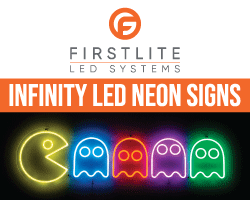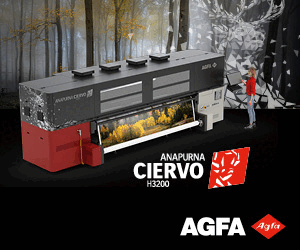Variable data printing can make a real difference to a brand’s investment in new product development, as Russell Weller, Head of Product – DP Colour, Domino explains.

Find more articles relating to packaging here.
The last few decades have seen the number of FMCG products available to consumers increase exponentially, driven by a multitude of factors, including brands’ desire to increase sales and act on changing market conditions and consumer behaviours.
While product diversification can open up new avenues for business growth, it also presents a number of challenges for brands – from increased supply chain costs, difficulty with forecasting accuracy, and the risk of shelf level stock-outs. It also places huge pressure on new product development.
Within an increasingly fast-paced retail market, brand owners and managers need to find effective ways to support faster response times to capitalise on emerging trends, and capture real-time consumer feedback to quickly ascertain a product’s success – or not. This is where variable data printing can make a real difference to a brand’s investment in new product development, as Russell Weller, Head of Product – DP Colour, Domino explains.
SKU proliferation
Distinct products are known as ‘stock keeping units’ (SKUs) – specific product and packaging combinations that we find on supermarket shelves every day, and the last five decades have given rise to mass “SKU proliferation”. The average UK supermarket, for example, now stocks over 30,000 SKUs, nearly four times as many as in 1975. In the US, Walmart’s supercentres can stock as many as 120,000 items, and Campbell’s Soup carries 400 different SKUs alone.
SKU proliferation is primarily a by-product of brands’ desire to appeal to changing consumer behaviour–from the rise in vegetarian and other dietary habits to more eco-friendly, recyclable and sustainable products and packaging–and has clear benefits. However, it isn’t without significant challenges for brand owners and, in particular, new product development (NPD) managers.
The first is cost. Research conducted on behalf of Domino reaffirms that NPD is an expensive process, especially in the FMCG sector, and approximately 75 to 95% of products fail. According to Harvard Business School Professor Clayton Christensen, the odds tilted towards the top end of this approximation: over 30,000 new products are introduced yearly, with 95% missing the mark.
The second challenge is agility. In a fast-moving market, agility is key for brands, yet traditional packaging and label printing processes have long lead times and high minimum order requirements that are not feasible for converters – both of which add to the overall development cost.
Finally, there is (or, more precisely, there isn’t) time. Domino’s research found that new products are frequently delisted within six weeks if they are underperforming; by the time product feedback from customers is received, it is often too late to change this.
Digital variable data printing can help brands mitigate some of the elements of each of these challenges: It can help lower the cost of product development by reducing the cost of the packaging element, and shorter lead times increase a brand’s agility by supporting faster response in packaging innovation. Smaller minimum quantities reduce supply chain challenges and packaging waste from overstock.
Digital printing also enables the use of designs incorporating variable data and 2D codes to capture real-time consumer feedback, with late-stage customisation in the factory an option for creating market variants in real time.
Increasing agility with variable data printing
Traditional multi-stage packaging and label printing processes do little to support the needs of new product development managers. Brands and converters are aware that digital printing offers a faster turnaround when implementing packaging changes. Still, the potential of variable data printing – beyond the mere printing of numeric codes – often remains overlooked.
Variable data printing (VDP) is a form of digital printing in which elements such as text, graphics or images can be changed from one printed label to the next without stopping or slowing down the printing process, effectively enabling the mass customisation of labels.
Within the specific application of new product development, the ability to incorporate variable elements and content into the label or packaging allows brands much-needed speed and agility when redesigning product labelling for a new variation or SKU. It also offers significant scope for product experimentation and marketing promotion, such as the introduction of seasonal and limited-edition flavours and on-pack promotions, as well as cost-effective, small runs of new packaging designs for A/B testing.
Variable data printing also makes it easy to update labels when the product formulation or recipe changes, i.e. because ingredients are unavailable or new sources of ingredients are used.
Finally, adding a variable data QR code, for example, combined with a call to action for consumers to scan the finished pack, can also be a valuable source of rapid insight into which designs or product variations are more successful.
Capturing real-time consumer feedback
“With new product development, it’s about ensuring that you can very, very quickly improve anything, be it messaging, portion size, anything that’s not quite right, to not just keep that line listed, but thriving and being successful.” (FMCG brand owner quote from Domino research)
Third-party consumer panels and product testing informing the earlier stages of product development may have given an indication of success, but once a product has been launched, identifying reasons for potential underperformance can be difficult and – when facing a lack of insight – it is often considered easier to delist. This is where variable data QR codes can help brand owners and product development teams gather crucial real-time feedback.
The positive news for brand owners is that QR code acceptance is steadily increasing across a wide range of contexts and so too is the number of scans. A 2023 research study from Statista suggests that the number of consumers in the United States who scan a QR code with their smartphone is expected to grow by 16 million between 2022 and 2025, driven by QR codes enabling mobile payments and codes providing access to traditionally printed publications online – such as restaurant menus enabling in-app ordering or weblinks within retail.
Similarly, LXA’s ‘State of QR Codes in 2023’ report cites that:
38.99% of respondents want to see QR codes used more broadly in the future
57% of respondents had scanned a food QR code to get specific information about the product
67% of the respondents agreed that these codes make life easier
For new product development managers, the use of variable data printing through QR codes enables seamless A/B testing of packaging variations to see which generates the highest consumer engagement, rapid identification of which product variation is purchased – and preferred – when testing new scent or flavour combinations, understanding of regional market preferences, and the evaluation of channel effectiveness.
Moreover, with brands already starting to consider using QR codes as part of the migration to 2D codes at the point-of-sale, and in particular, QR codes powered by GS1 – previously known as the GS1 Digital Link – harnessing this powerful technology to inform product development seems a logical step.
Conclusion
SKU proliferation represents a massive opportunity for brands but has placed significant pressure on brand and new product development managers to react rapidly to emerging trends and – even more rapidly – identify which product variations will be successful.
To make their product development process more agile and enhance it with real-time consumer feedback, brands should consider partnering with packaging and label converters who can provide high-resolution digital variable data printing as part of their services or consider investing in digital printing technology to apply variable QR codes near-line in their own factories.










